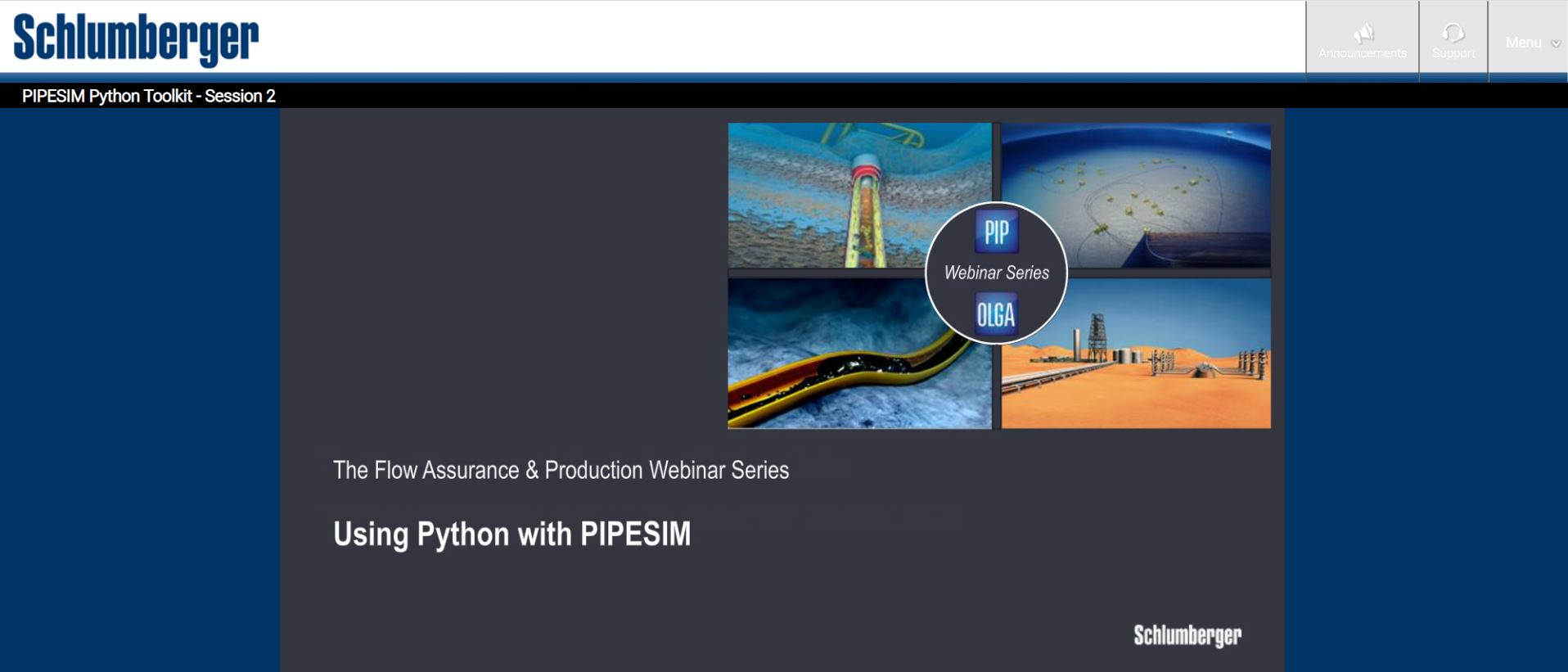Webinar on Using Python in Pipesim Software

About Course
About Python-
Python is an interpreted, high-level and general-purpose programming language. Created by Guido van Rossum and first released in 1991, Python’s design philosophy emphasizes code readability with its notable use of significant whitespace. Its language constructs and object-oriented approach aim to help programmers write clear, logical code for small and large-scale projects.
Python is dynamically typed and garbage-collected. It supports multiple programming paradigms, including structured (particularly, procedural), object-oriented, and functional programming. Python is often described as a “batteries included” language due to its comprehensive standard library.
Python was created in the late 1980s as a successor to the ABC language. Python 2.0, released in 2000, introduced features like list comprehensions and a garbage collection system with reference counting.
Python 3.0, released in 2008, was a major revision of the language that is not completely backward-compatible, and much Python 2 code does not run unmodified on Python 3.
Python interpreters are available for many operating systems. A global community of programmers develops and maintains CPython, a free and open-source reference implementation. A non-profit organization, the Python Software Foundation, manages and directs resources for Python and CPython development.
About PIPESIM-
The PIPESIM steady-state multiphase flow simulator offers workflows for both front-end system design and production operations. The PIPESIM simulator is frequently used to identify situations that require more detailed transient simulation using the OLGA multiphase flow simulator.
Modern production systems require designs that ensure safe and cost-effective transportation of fluids from the reservoir to the processing facilities. Once these systems are brought into production, the ability to ensure optimal flow is critical to maximizing economic potential. From complex individual wells to vast production networks, the PIPESIM steady-state multiphase flow simulator enables production optimization over the complete lifecycle.
For over 30 years, the PIPESIM simulator has been continuously improved by incorporating not only the latest science in the three core areas of flow modelling—multiphase flow, heat transfer, and fluid behavior—but also the latest innovations in computing, and oil and gas industry technologies. The simulator includes advanced three-phase mechanistic models, enhancements to heat transfer modelling, and comprehensive PVT modelling options. The ESRI-supported GIS map canvas helps deliver true spatial representation of wells, equipment, and networks. Networks can be built on the GIS canvas or generated automatically using a GIS shape file. The interactive graphical wellbore enables rapid well model building and analysis. Faster simulation runtime has also been achieved for all modelling though the implementation of a new parallel network solver to spread the computational load across all processors.
Source-
www.slb.com
Course Content
Using Python in Pipesim
-
Using-Python in Pipesim
57:49
